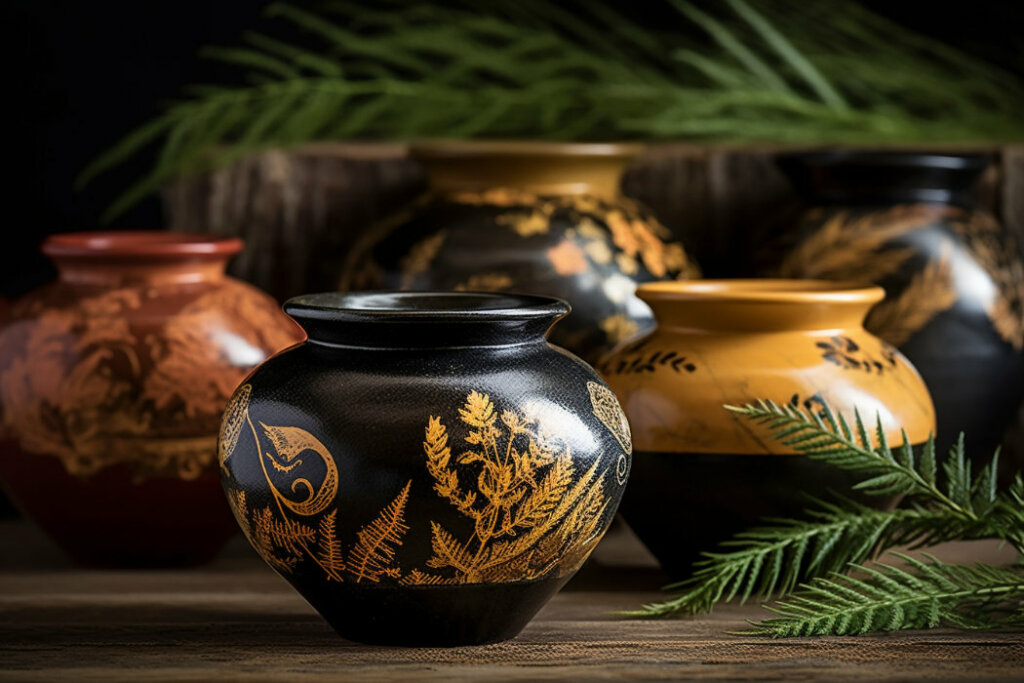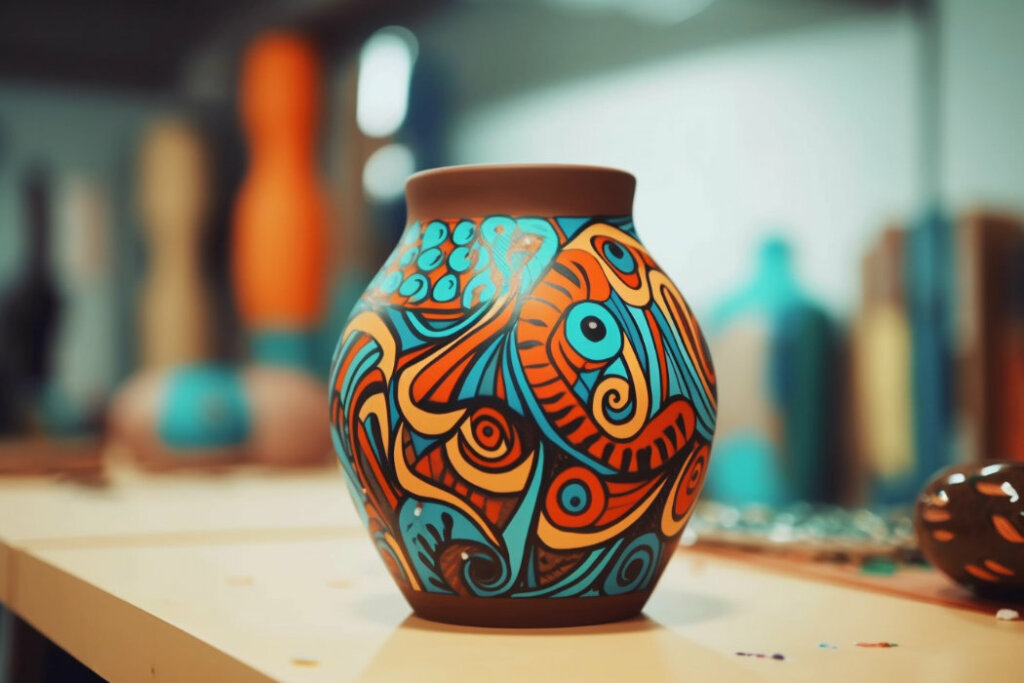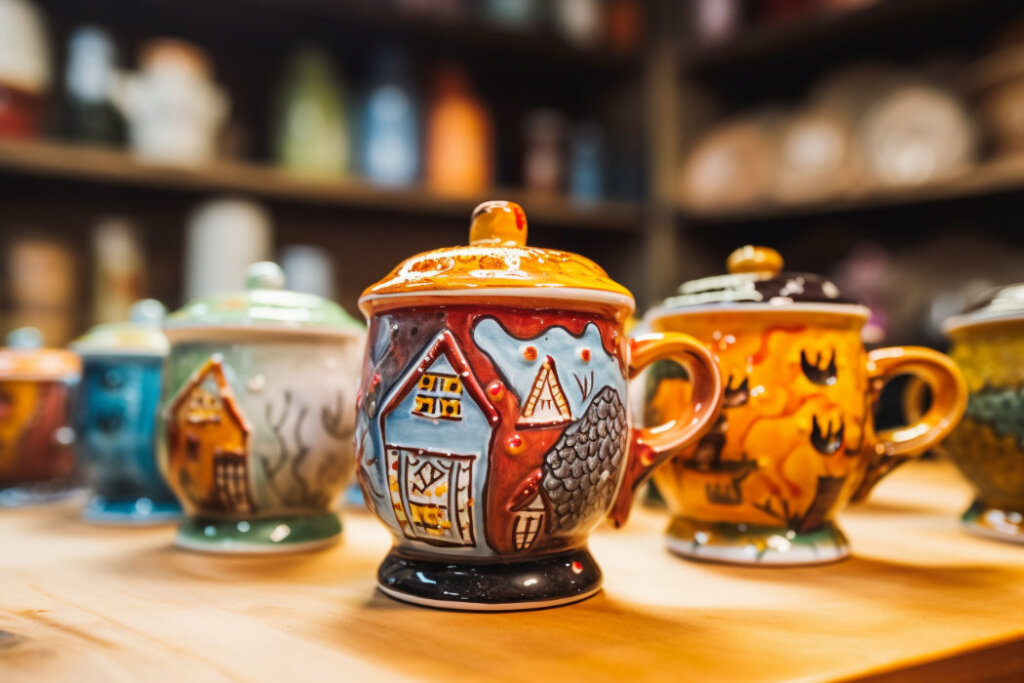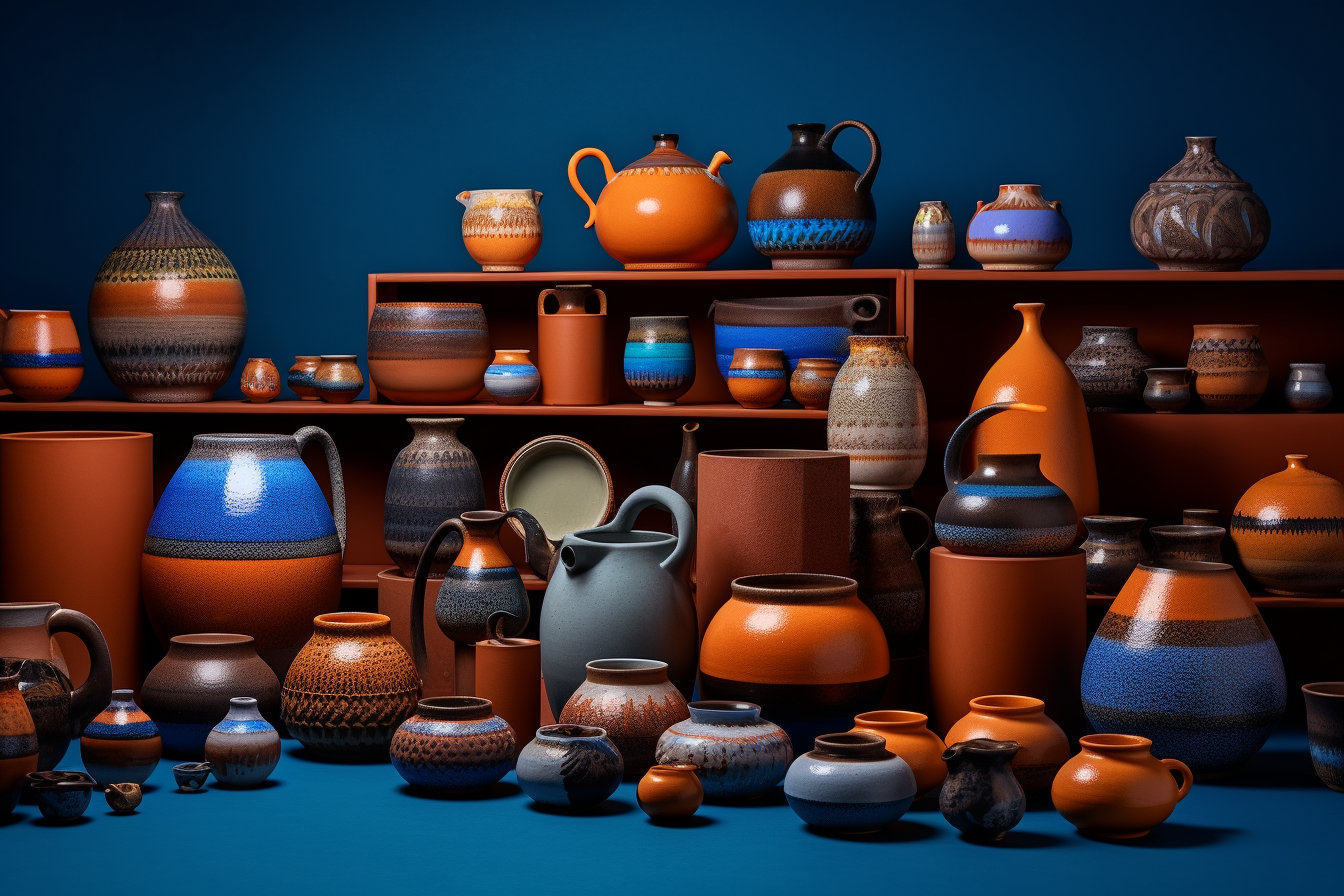Pottery painting is a dynamic and rewarding form of art that combines traditional pottery crafting techniques with the more delicate skills of painting. It allows individuals to take a humble piece of clay and transform it into a beautiful and unique work of art. Pottery painting is not just about decorating ceramic pieces; it is also about expressing oneself, telling a story, and adding personal flair to functional objects.
The practice of pottery painting extends far beyond pure aesthetics, acting as a canvas for creative minds to test out new ideas, challenge their abilities, and reveal their artistic identity. Creativity in ceramics is essential as it elevates an ordinary piece of pottery into something unique and personal. Whether you choose abstract patterns, floral designs, or geometric shapes, your artistic imprint makes the piece truly yours.
Why Pottery Painting is Beneficial
Pottery painting is more than an enjoyable pastime; it carries several significant benefits that can improve our well-being and personal development.
The Therapeutic Benefits of Pottery Painting
Pottery painting has been recognized as a form of art therapy, offering numerous psychological and physical benefits. The focused attention required to paint on pottery has been likened to meditation, allowing artists to enter a state of flow where worries and stress can melt away.
Crafting and painting pottery engage the hands and mind in a productive activity, which can help reduce anxiety and promote relaxation. Furthermore, the act of creating something tangible provides a sense of accomplishment and boosts self-esteem.
How Pottery Painting Can Spark Creativity
Pottery painting is an excellent way to stimulate creativity. The blank ceramic surface serves as an open invitation for imagination, where any concept or vision can be brought to life. The process of choosing colors, patterns, and designs requires problem-solving and innovative thinking.
Whether you’re a seasoned artist or a beginner, pottery painting offers a platform to experiment, make mistakes, and learn. It’s a limitless artistic medium where every new project can be an adventure in creativity.
Basics of Pottery Painting
Before you dive into the world of pottery painting, it’s essential to familiarize yourself with the basic tools, materials, and techniques you’ll need to bring your designs to life.
Required Tools and Materials for Pottery Painting
The primary tools and materials for pottery painting include:
- Pottery Piece: You need a ceramic piece as your canvas. This could be a plate, mug, bowl, or vase – whatever you prefer or have on hand.
- Ceramic Paints or Underglazes: These special paints are designed to adhere to ceramic surfaces and withstand the high temperatures of a kiln. They come in a variety of colors.
- Brushes: Brushes of different sizes are crucial for creating varied designs. A larger brush is ideal for covering large areas, while a smaller, finer brush is perfect for intricate designs.
- Sponges: Used for creating texture or for applying large areas of color.
- Palette: A palette will help you mix your paints and keep them organized as you work.
- Water Container and Cloth: You’ll need water to clean your brushes and a cloth or paper towel to wipe away any mistakes.
- Clear Glaze and Kiln: After painting, the pottery piece is typically coated in a clear glaze and fired in a kiln to seal and protect the design.
Brief Overview of Pottery Painting Techniques
Pottery painting techniques can be as simple or as complex as you want them to be. Here are a few basics to get you started:
- Sponging: This technique involves dabbing a sponge lightly onto the ceramic surface, creating a unique texture and depth of color.
- Stenciling: Stencils are a great way to create precise, repeating patterns or designs on your pottery.
- Freehand painting: As the name suggests, this method involves painting directly onto the pottery without any guide, allowing your creativity to guide the way.
- Sgraffito: This technique involves applying layers of different colored underglazes and then scratching away parts of the upper layers to reveal the colors beneath.
- Slip trailing: This technique uses liquid clay or “slip” to create raised designs on the pottery’s surface before painting.
Remember, the best pottery painting technique is the one that allows you to express your creativity freely. Experiment with different methods and find the one that suits your style best.
Top 10 Pottery Painting Ideas
Here, we explore ten pottery painting ideas that you can try for your next ceramics project. Whether you’re a novice or a seasoned pottery artist, these designs can inspire and challenge you to create a unique piece of functional art.






- Geometric Patterns: Squares, circles, triangles, or any other shapes can be used to create interesting and modern designs. They can be simple or complex, uniform or random, colorful or monochrome; the choice is yours.
- Nature-inspired Designs: From leaves and trees to animals and landscapes, nature provides an endless source of inspiration. You can paint a single motif or a scene that covers the whole piece.
- Abstract Art: If you enjoy playing with colors, forms, and visual effects, abstract art might be your go-to design. There are no rules here; let your imagination guide your brush.
- Traditional Motifs: Cultural and traditional motifs can add an exotic and timeless touch to your pottery. Greek keys, Moroccan tiles, or Japanese waves, for example, can give your piece a unique character.
- Pop Culture Themes: From favorite cartoon characters to iconic movie scenes, pop culture themes are a fun way to personalize your pottery and engage younger artists.
- Personalized Monograms: Initials or names painted in a stylish font can make a pottery piece truly personal and an ideal gift. You can surround the text with decorative elements for a more artistic look.
- Color Block Designs: This technique involves painting different sections of your pottery in different colors. The result is a bold and modern look that can be adapted to any pottery shape.
- Textured Techniques: Using tools and materials like sponges, toothpicks, or bubble wrap, you can create interesting textures on your pottery. The result is a tactile piece that is pleasing to both the eye and the touch.
- Landscapes and Seascapes: If you’re feeling ambitious, why not try painting a beautiful sunset, a tranquil seascape, or a serene countryside scene on your pottery?
- Fruit and Floral Designs: These classic motifs never go out of style. From detailed roses to simple daisy chains, from colorful citrus slices to minimalist pears, the options are endless.
Remember, the most important thing about pottery painting is to have fun and express your creativity. Don’t worry about making it perfect. Art is all about expressing yourself and enjoying the process.
How to Execute these Ideas: Step-by-Step Guides
Each pottery painting idea mentioned can be brought to life following basic guidelines. However, remember that these are not rules, but simply prompts to ignite your creativity. Feel free to modify the steps to suit your style and imagination.
(For the sake of brevity, I’ll provide a simplified example for one idea – Geometric Patterns.)
Geometric Patterns:
- Choose your colors: Decide on the color scheme for your design. You might want to stick to monochrome or opt for a vibrant multi-colored pattern.
- Draw your design: Using a pencil, lightly sketch your geometric pattern onto your ceramic piece. This could be a simple checkered design or a complex tessellation.
- Start painting: Using a fine brush, outline your design with one of your chosen colors. Fill in the shapes, alternating colors as per your plan.
- Let it dry: Allow the paint to dry completely before proceeding with the next step.
- Apply the glaze: Once the paint is dry, apply a clear glaze to seal the design and give your piece a glossy finish.
- Fire the pottery: The final step is to fire your piece in a kiln. This step will make the paint permanent and give your piece a professional, finished look.
Tips for Perfecting Your Pottery Painting
As you venture into pottery painting, here are a few tips to help perfect your craft:
Best Practices for Pottery Painting
- Plan ahead: Sketch your design on paper first or lightly on your pottery piece to get a sense of what the finished product might look like.
- Start simple: If you’re new to pottery painting, start with simpler designs and gradually move onto more complex patterns as you become more confident.
- Patience is key: Don’t rush the process. Take your time with each stroke, and remember to let the paint dry completely before applying a new layer or color.
How to Correct Common Mistakes
- Mistakes are opportunities: If you make a mistake, don’t panic. Sometimes, what seems like a mistake can turn into a creative opportunity.
- Wipe away wet paint: If the paint is still wet, you can easily wipe it off with a damp sponge or cloth.
- Paint over dry paint: If the mistake is too noticeable and the paint has already dried, simply paint over it. You might need to apply a few layers to completely cover the previous color.
Conclusion
Exploring your creativity through pottery painting can be a fulfilling and therapeutic process. It’s not just about the end product, but the journey of transformation from a simple clay piece to a work of art that truly encapsulates your imagination.
Don’t get caught up in the pursuit of perfection. Embrace the beauty of imperfections and let your creativity flow freely. Remember, the best piece of art you can create is one that brings you joy.
We hope these pottery painting ideas inspire you to pick up your brushes and start your creative journey. Happy painting!

